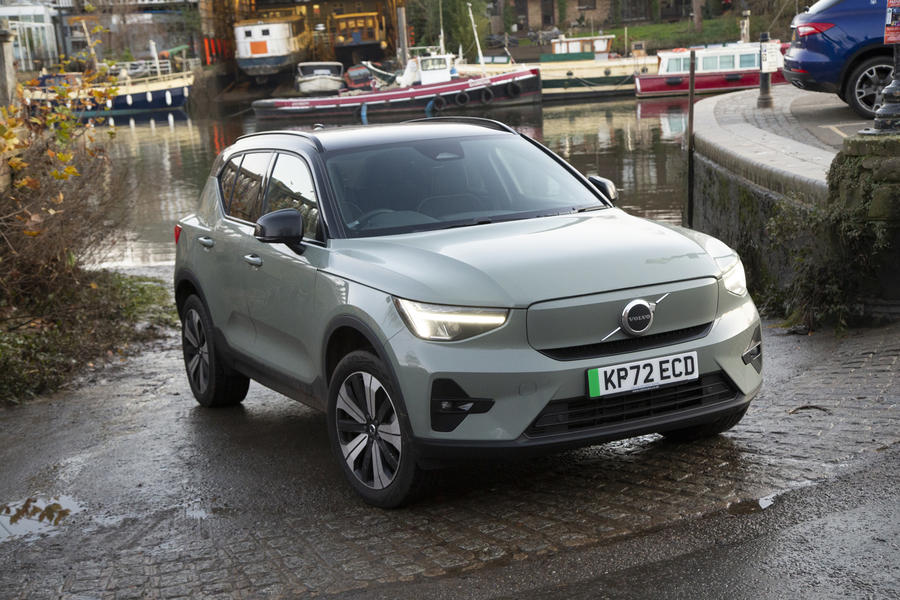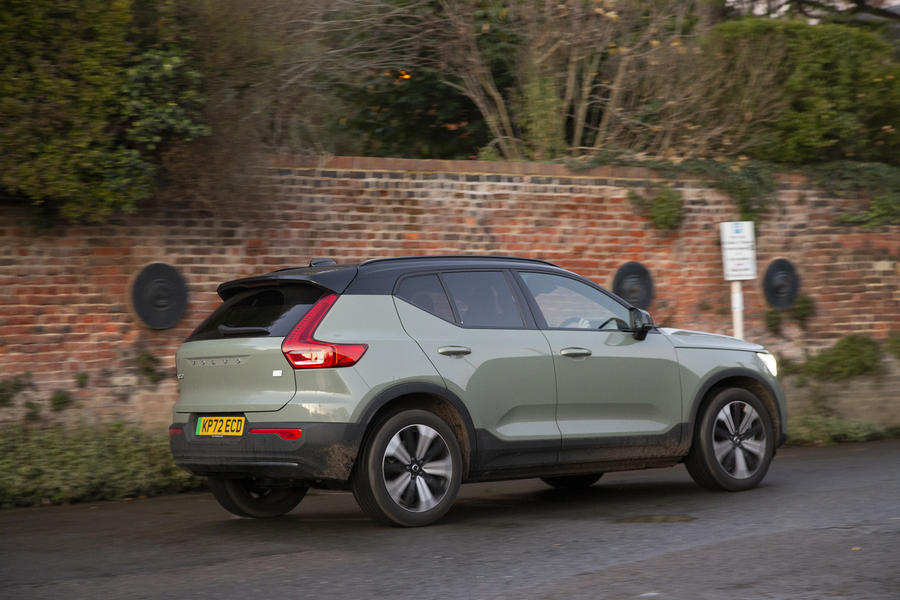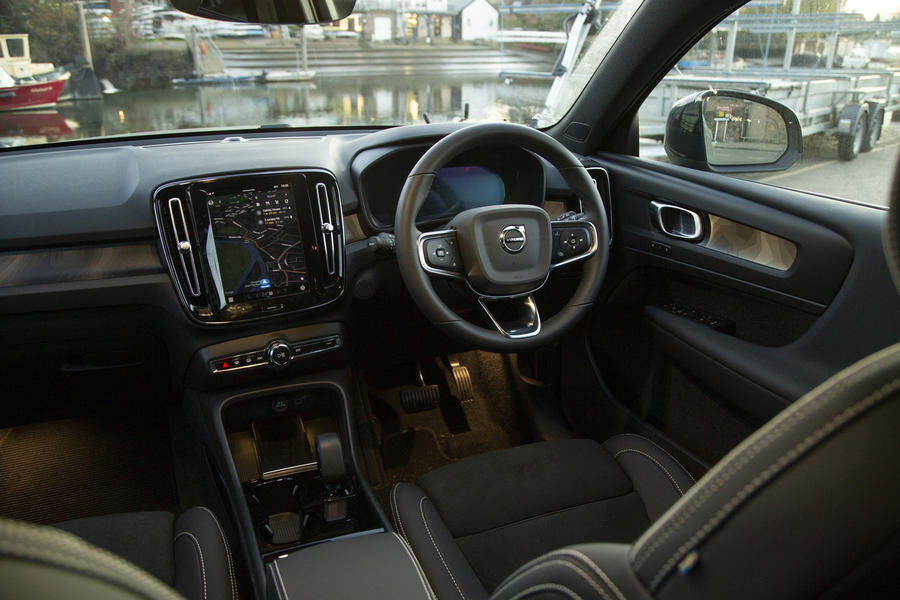Stylish and slightly different electric compact SUV steps up for fleet duties
Why we’re running it: To see if the Volvo XC40 Recharge, Volvo’s smallest battery-powered SUV, can be a motorway commuter and weekend companion
Month 1 – Specs

Life with a Volvo XC40 Recharge: Month 1
Welcoming the XC40 Recharge to the fleet – 8 February 2023
You’re kidding; that’s my dream car!” my partner said as news of the incoming Volvo XC40 came in. I had at this point failed to inform her that it would be electric, and given that we live in a city-centre third-floor flat, I felt that was the right call for the time being. More on that to come.
Volvos have long been a divisive choice, especially with the lingering stigma of being antique dealer/old man/dad wagons. Even now I’m getting the “Really? A Volvo?” response. Yes, really. And I’m excited. This is my second, having previously owned from new a 2015 V40 D2 (in R-Design specification, of course), which I absolutely adored and hated having to sell.
The new model in question is the baby electric SUV of the current Volvo line-up. The XC40 Recharge is a gorgeous thing to look at (ours is finished in Sage Green) that holds its own on the road as well as any SUV currently on sale. It has a presence akin to that of the also tall and stubby new Land Rover Defender 90.
With a starting price close to £45,000, it’s also well and truly in the premium bracket of electric SUVs. For the money, though, you get a decent amount of standard kit – cruise control, parking cameras, Google’s excellent infotainment system – and about the best ride you’re going to find in this price bracket or even the one above.

Other people clearly agree, because this was Europe’s ninth-best-selling EV last November and Volvo’s best-selling model (in both powertrain forms) overall last year, with a total of 84,132 cars shifted.
Our test model is in mid-level Plus trim (a nicer interior and some neat exterior touches), which bumped the entry price by just under £8000. It also came fitted with some lovely suede-like leather-free microtech upholstery, albeit a £925 option.
Volvo promises a 262-mile range from the XC40’s 69kWh battery for that price. Not bad. However, that dream was shot down straight away after my first 100% charge – that had to be undertaken a 10-minute walk away, given my lack of a driveway/home charger – with the range reading 170 miles. Granted, it was 6deg C outside, but that is a big chop. And with a 120-mile commute, the plan to charge every other day seemed to be in tatters.
On the driving side, the XC40 passes with near-flying colours. Its smooth ride and easy-to-use one-click cruise control, assisted by the advanced (but weird to get used to) lane keeping Pilot mode, make motorway use a breeze. Just a touch too much road noise lets it down.

The range is once again zapped when you hit 70mph (I returned home with fewer than 30 miles on the clock), showing that this car – the 228bhp single-motor version – was designed more as an inter-town shuttle rather than a longer-distance commuter.
Yet if you order any EV variant of the XC40 now, waiting times mean the model you get will come with a new rear-wheel-drive set-up rather than the front-wheel-drive one of this model. Volvo says that change improves efficiency and therefore range, which rises to 286 miles.
Other plus points in our test car come from the Google-derived infotainment system (it works just like Google Home with speech assistance: ‘Okay, Google…’) and vertically oriented, Google Maps-friendly central screen. But just a week in and disaster struck: the sound stopped working. And not just the radio but the indicators and sensor warnings too; it all comes out of the speakers. Not great. Luckily, YouTube provided the solution and a system reset fixed it.
This wasn’t the only infotainment hiccup. Cold weather makes it slow and buggy, which was particularly infuriating in the recent biting weather when I was attempting to adjust the climate settings or switch my heated seat on (controls for both of which now, of course, lurk on screen). Last gripe: you can turn the one-pedal drive mode on or off only in the on-screen settings menu, which compares unfavourably with the Volkswagen ID 4’s fly-stalk switching.
Regardless, these are minor problems in an otherwise problem-solving car. With space for five adults (four in maximum comfort), a trip from Southampton to Bristol was a doddle and no leg room gripes were heard. The heated rear seats were particularly loved by passengers.
Christmas, the time that always comes around far too quickly and which requires too many trips back and forth across the country, also felt easy in the XC40. I’m more used to my BMW Z4, with its boot about the size of a kitchen drawer, so the Volvo’s 452-litre offering is Tardis-like in comparison. It swallowed presents for two families without a fuss (although the rear seats were dropped to assist with Dad’s new golf putting mat). And if you need more space, those rear seats can be flattened with the pull of a lever and without the need to faff about with seatbelts. It really is a practical, family-friendly vehicle.
In short, it feels like a car made to make life easier, and so far that really is proving to be the case.
Second Opinion
This XC40 is a car that should reassure people about the change from ICE to EV, because it remains so typically a Volvo. It’s comfy, quiet, supple over bumps and as practical as ever. Sure, the range needs management (mostly by judicious containment of open-roads cruising speeds), but in every other way it’s reassuringly true to its marque values.
Steve Cropley
Volvo XC40 Recharge Plus specification
Specs: Price New £45,750 Price as tested £53,525 Options Connect textile and microtech upholstery £925, premium metallic paint £850
Test Data: Engine RWD single motor, 69kWh battery Power 228bhp Torque 243lb ft Kerb weight 2030kg Top speed 99mph 0-62mph 7.4sec Range 262 miles Economy 3.3mpkWh CO2 0g/km Faults Infotainment snags Expenses None
Source: Autocar
